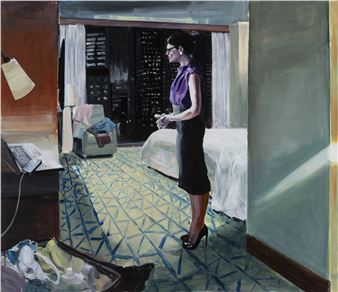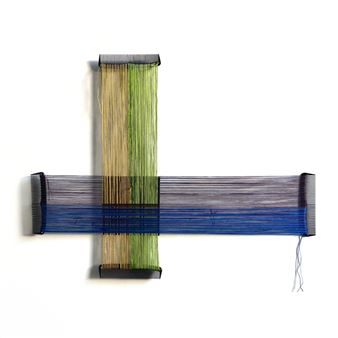Lo Que Es, Es Lo Que Ha Sido/What It Is, Is What Has Been: Selections From The Asu Art Museum’s Cuban Art Collection
Lo que es, es lo que ha sido/What It Is, Is What Has Been: Selections from the ASU Art Museum’s Cuban Art Collection explores artistic expression during times of humanitarian crises and social upheaval. The exhibition is the first major curatorial collaboration between Phoenix Art Museum and Arizona State University Art Museum (ASU Art Museum) in more than a decade and draws from the contemporary Cuban art collection at ASU Art Museum to provide deeper context to PhxArt’s simultaneous presentation of the special-engagement exhibition Juan Francisco Elso: Por América, a project organized by El Museo del Barrio in New York City.
Curated by Olga Viso, in collaboration with Susanna V. Temkin, curator at El Museo del Barrio, Juan Francisco Elso: Por América provides a rare opportunity to experience Elso’s fragile extant works that draw influence from Indigenous Mesoamerican traditions, Afro-Caribbean religious beliefs, and the traumas of colonial oppression on contemporary Cuban, Caribbean, and Latin American identities. Elso’s sculptures and installations reveal a more expansive understanding of the Americas, free of geopolitical borders and nations, and likewise provide insight into the social and political context of 1980s Communist Cuba.
Along with providing a glimpse into the past, Lo que es, es lo que ha sido/What It Is, Is What Has Been additionally explores the way Cuban artists today continue to grapple with issues of governmental control, economic failure, and censorship that likewise characterized the island’s Special Period. This is the subject of Reynier Leyva Novo’s monumental portrait of the Cuban national hero, José Marti, which is currently on view on the main floor of the Museum’s Katz Wing. The work’s title, Lo que es, es lo que ha sido (What it is, is what has been), provides the inspiration for the title of the larger exhibition and links the recent past to the present moment. In conversation, Novo’s work, Por América, and the exhibition featuring work from the ASU Art Museum take on more universal significance, particularly when viewed through the lens of global tumult and social change in a rapidly shifting world.

Recommended for you
Lo que es, es lo que ha sido/What It Is, Is What Has Been: Selections from the ASU Art Museum’s Cuban Art Collection explores artistic expression during times of humanitarian crises and social upheaval. The exhibition is the first major curatorial collaboration between Phoenix Art Museum and Arizona State University Art Museum (ASU Art Museum) in more than a decade and draws from the contemporary Cuban art collection at ASU Art Museum to provide deeper context to PhxArt’s simultaneous presentation of the special-engagement exhibition Juan Francisco Elso: Por América, a project organized by El Museo del Barrio in New York City.
Curated by Olga Viso, in collaboration with Susanna V. Temkin, curator at El Museo del Barrio, Juan Francisco Elso: Por América provides a rare opportunity to experience Elso’s fragile extant works that draw influence from Indigenous Mesoamerican traditions, Afro-Caribbean religious beliefs, and the traumas of colonial oppression on contemporary Cuban, Caribbean, and Latin American identities. Elso’s sculptures and installations reveal a more expansive understanding of the Americas, free of geopolitical borders and nations, and likewise provide insight into the social and political context of 1980s Communist Cuba.
Along with providing a glimpse into the past, Lo que es, es lo que ha sido/What It Is, Is What Has Been additionally explores the way Cuban artists today continue to grapple with issues of governmental control, economic failure, and censorship that likewise characterized the island’s Special Period. This is the subject of Reynier Leyva Novo’s monumental portrait of the Cuban national hero, José Marti, which is currently on view on the main floor of the Museum’s Katz Wing. The work’s title, Lo que es, es lo que ha sido (What it is, is what has been), provides the inspiration for the title of the larger exhibition and links the recent past to the present moment. In conversation, Novo’s work, Por América, and the exhibition featuring work from the ASU Art Museum take on more universal significance, particularly when viewed through the lens of global tumult and social change in a rapidly shifting world.
Contact details


 ARTISTS
ARTISTS















